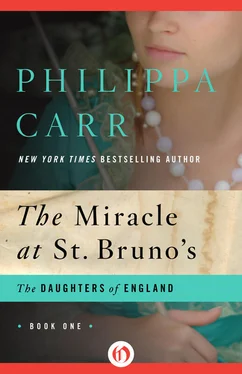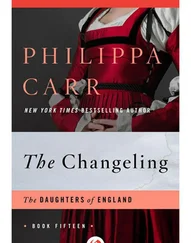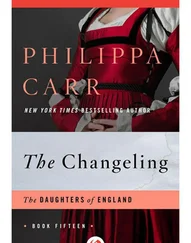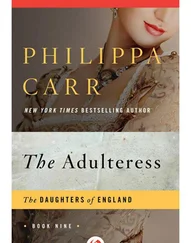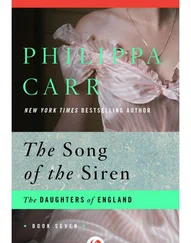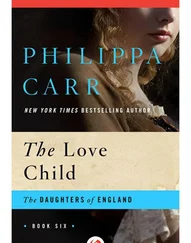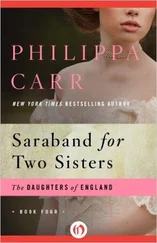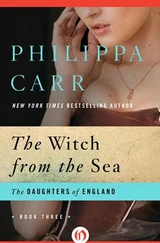Philippa Carr - The Miracle at St. Bruno's
Здесь есть возможность читать онлайн «Philippa Carr - The Miracle at St. Bruno's» весь текст электронной книги совершенно бесплатно (целиком полную версию без сокращений). В некоторых случаях можно слушать аудио, скачать через торрент в формате fb2 и присутствует краткое содержание. Жанр: Исторические любовные романы, на английском языке. Описание произведения, (предисловие) а так же отзывы посетителей доступны на портале библиотеки ЛибКат.
- Название:The Miracle at St. Bruno's
- Автор:
- Жанр:
- Год:неизвестен
- ISBN:нет данных
- Рейтинг книги:4 / 5. Голосов: 1
-
Избранное:Добавить в избранное
- Отзывы:
-
Ваша оценка:
- 80
- 1
- 2
- 3
- 4
- 5
The Miracle at St. Bruno's: краткое содержание, описание и аннотация
Предлагаем к чтению аннотацию, описание, краткое содержание или предисловие (зависит от того, что написал сам автор книги «The Miracle at St. Bruno's»). Если вы не нашли необходимую информацию о книге — напишите в комментариях, мы постараемся отыскать её.
The Miracle at St. Bruno's — читать онлайн бесплатно полную книгу (весь текст) целиком
Ниже представлен текст книги, разбитый по страницам. Система сохранения места последней прочитанной страницы, позволяет с удобством читать онлайн бесплатно книгу «The Miracle at St. Bruno's», без необходимости каждый раз заново искать на чём Вы остановились. Поставьте закладку, и сможете в любой момент перейти на страницу, на которой закончили чтение.
Интервал:
Закладка:
Philippa Carr
The Miracle at St. Bruno’s
Prologue
EARLY ON CHRISTMAS DAY of the year 1522 the Abbot of St. Bruno’s Abbey drew aside the curtains which shut off the Lady Chapel from the rest of the Abbey Church and there, in the Christmas crib, which Brother Thomas had so skillfully carved, lay, not the wooden figure of the Christ which had been put there the night before, but a living child.
The Abbot, an old man, immediately thought that the candles flickering on the altar had played some trick on his failing eyesight. He looked from the crib to the inanimate figures of Joseph, Mary and the three wise men; and from them to the statue of the Virgin set high above the altar. His eyes went back to the child expecting it to have been replaced by the wooden image. But it was still there.
He hurried from the chapel. He must have witnesses.
In the cloister he came face to face with Brother Valerian.
“My son,” said the Abbot, his voice trembling with emotion. “I have seen a vision.”
He led Brother Valerian to the chapel and together they gazed down on the child in the crib.
“It is a miracle,” said Brother Valerian.
About the crib stood a circle of black-robed figures—Brother Thomas from the woodhouse, Brother Clement from the bakehouse, Brothers Arnold and Eugene from the brewhouse, Brother Valerian whose delight was the scriptorium where he worked on his manuscripts, and Brother Ambrose, whose task was to till the soil.
The Abbot watched them closely. All were silent with awe and wonder, except Brother Ambrose, who exclaimed, his voice tense with excitement, “Unto us a child is given.” His eyes were gleaming with an emotion he could not suppress. He was a young monk—twenty-two years of age—and of all his sons Ambrose gave the Abbot most concern. Often he had wondered whether Ambrose should remain in the community; yet at times this monk seemed to embrace monasticism more fervently than his fellows. The Abbot had recently come to the conclusion that Brother Ambrose could either be a saint or a sinner and whosoever it was who claimed him—God or the Devil—Brother Ambrose would be a most devoted disciple.
“We must care for this child,” said Brother Ambrose earnestly.
“Is he sent to stay with us then?” asked Brother Clement, the gentle, simple one.
“How did he come here?” asked Brother Eugene, the worldly one.
“It is a miracle,” retorted Brother Ambrose. “Does one question a miracle?”
So this was the miracle of St. Bruno’s Abbey. Soon the news spread through the countryside and people traveled far to visit the blessed spot. They brought gifts for the Child like the wise men of old and in the years that followed rich men and women remembered St. Bruno’s in their wills; so that in due time the Abbey, which had been in dire decline—a fact which caused its Abbot grave concern—became one of the most prosperous in the south of England.
Part I
The Jeweled Madonna
I WAS BORN IN the September of 1523, nine months after the monks had discovered the Child in the crib on that Christmas morning. My birth was, my father used to say, another miracle. He was not young at the time, being forty years of age; he had recently married my mother who was more than twenty years his junior. His first wife had died giving birth to a stillborn son after having made several attempts to bear children all of which had failed; and because my father at last had a child, he called that a miracle.
It is not difficult to imagine the rejoicing in the household. Keziah, who was my nurse and mentor in those early days, was constantly telling me about it.
“Mercy me!” she said. “The feasting. It was like a wedding. You could smell the venison and sucking pig all over the house. And there was tansy cake and saffron cake with mead to wash it down for all who cared to call for it. The beggars came from miles around. What a time of plenty! Poor souls! Up to St. Bruno’s for a night’s shelter, a bite to eat and a blessing and then to the Big House for tansy and saffron. And all on account of you.”
“And the Child,” I reminded her, for I had very quickly become aware of the miracle of St. Bruno’s.
“And the Child,” she agreed; and whenever she spoke of the Child, a certain smile illumined her face and made her beautiful.
My mother, whose great pleasure was tending her gardens, called me Damask, after the rose which Dr. Linacre, the King’s physician, had brought into England that year. I began to grow up with a sense of my own importance, for my mother’s attempts to bear more children were frustrated. There were three miscarriages in the five years that followed. I was cosseted, watched over, cherished.
My father was a good and gentle man, who went into the city to do his business. Each day one of the boats at our privy steps would be untied and a servant in dark-blue livery would row him upriver. Sometimes my mother would carry me down to the steps to watch him go; she would tell me to wave so that my father would gaze lovingly at me until he was carried too far away to see me.
The big house with its timber frame and gables had been built by my father’s father; it was commodious with its great hall, its numerous bedchambers and reception rooms, its winter parlor and its three staircases. At the east wing a stone spiral one led to the attic bedrooms occupied by our servants; and in addition there was the buttery, the scalding house, the washhouse, the bakehouse and the stables. My father owned many acres which were farmed by men who lived on his estate; and there were animals too—horses, cows and pigs. Our land adjoined that of St. Bruno’s Abbey and my father was a friend of several of the lay brothers for he had once been on the point of becoming a monk.
Between the house and the river were the gardens by which my mother set such store. There she grew flowers most of the year round—irises and tiger lilies; lavender, rosemary, gillyflowers and of course roses. The damask rose was always her favorite though.
Her lawns were smooth and beautiful; the river kept them green and both she and my father loved animals. We had our dogs and our peacocks too; how often we laughed at the strutting birds flaunting their beautiful tails while the far less glorious peahens followed in the wake of their vainglorious lords and masters. One of my first memories was feeding them with the peas they so loved.
To sit on the stone wall and look at the river always delighted me. When I see it now it suggests serenity and perfect peace more than anything else I know. And in those days in my happy home I believed I was not altogether unconscious of the deep satisfying sense of security, although I didn’t appreciate it then; I was not wise enough to do so, but took it for granted. But I was quickly to be jerked out of my complacent youth.
I remember a day when I was four years old. I loved to watch the craft moving along the river and because my parents could not deny themselves the pleasure of indulging me, my father would often take me to the river’s edge—I was forbidden to go there alone because they were terrified that some accident would befall their beloved only child. There he would sit on the low stone wall while I stood on it. He would keep his arm tightly about me, he would point out the boats as they passed, and sometimes he would say: “That is my lord of Norfolk.” Or, “That is the Duke of Suffolk’s barge.” He knew these people slightly because sometimes in the course of his business he met them.
On this summer’s day as the strains of music came from a grand barge which was sailing down the river my father’s arm tightened about me. Someone was playing a lute and there was singing.
Читать дальшеИнтервал:
Закладка:
Похожие книги на «The Miracle at St. Bruno's»
Представляем Вашему вниманию похожие книги на «The Miracle at St. Bruno's» списком для выбора. Мы отобрали схожую по названию и смыслу литературу в надежде предоставить читателям больше вариантов отыскать новые, интересные, ещё непрочитанные произведения.
Обсуждение, отзывы о книге «The Miracle at St. Bruno's» и просто собственные мнения читателей. Оставьте ваши комментарии, напишите, что Вы думаете о произведении, его смысле или главных героях. Укажите что конкретно понравилось, а что нет, и почему Вы так считаете.
